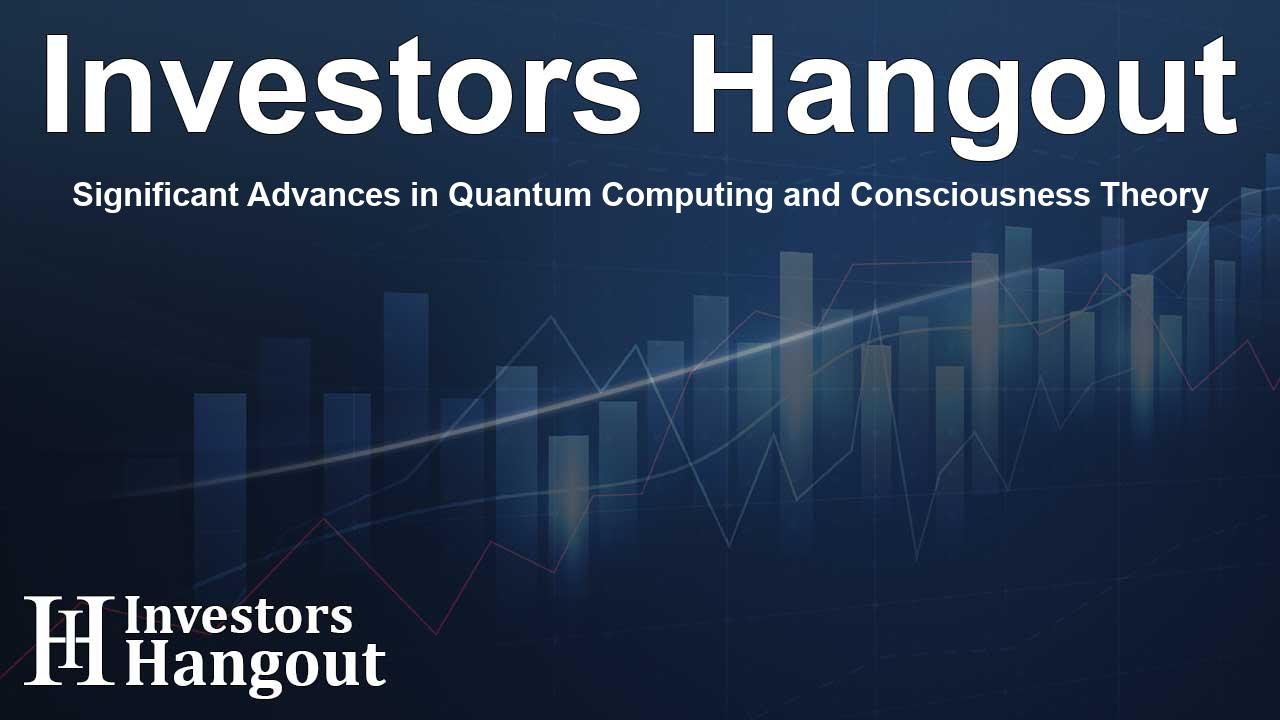Significant Advances in Quantum Computing and Consciousness Theory

Groundbreaking Developments in Quantum Computing
In a remarkable breakthrough, scientists at Valis Corporation have successfully demonstrated gravitationally induced wavefunction collapse using IBM's Eagle quantum chip. This pivotal finding aligns with the Penrose-Hameroff theory of Orchestrated Objective Reduction (Orch-OR), which offers a fresh perspective on the nature of human consciousness. The research will be shared at an upcoming Deep Tech Week in New York, highlighting its significance in the field of quantum science.
Understanding Schrödinger's Cat and Quantum Mechanics
The paradox of Schrödinger's Cat illustrates a fundamental mystery in quantum physics. It posits that a cat in a sealed box is both alive and dead until it is observed due to quantum superposition. This thought experiment reveals the strange behaviors of particles and light at the quantum level, which allows them to exist in multiple states simultaneously. While we can observe light behavior through everyday phenomena like oily water puddles, larger objects, such as cats, never seem to occupy two positions at once, raising intriguing questions about reality.
Exploring Theories Addressing Quantum Paradoxes
Over the years, physicists have proposed various solutions to the Schrödinger's Cat paradox. Some suggest that every quantum event spawns a new universe, leading to the widely popular 'many-worlds' interpretation. However, Nobel Laureate Roger Penrose views these solutions as overly complex and instead offers a more straightforward approach. He argues that the conflict arises from the rules of general relativity, asserting that large objects would warp space-time when in a superposition state. Ultimately, he theorizes that when the universe bends beyond a certain limit, it settles into one reality, resulting in the cat either living or dying.
Testing Consciousness with Quantum Devices
What sets the Penrose-Hameroff theory apart is its testability using quantum machinery along with macroscopic objects. In the groundbreaking experiment by Valis, the quantum component consists of a solitary bit on the IBM Eagle chip. In parallel, the physical device involves a microwave control system that connects the qubits to real-world applications. This duality allows researchers to observe potential gravitational collapse, setting up experiments that mimic Schrödinger's original thought experiment using contemporary quantum technology.
The complexity of the coding required for this test is beyond the reach of a single individual to create efficiently. However, with the advent of large language models (LLMs), rapid ideation and iteration become feasible. By applying natural language descriptions to frame the scientific challenge, a straightforward quantum program emerged. The testing framework utilizes IBM's Qiskit, collaborating with various LLMs to navigate the intricacies of quantum programming. Notable models like OpenAI's ChatGPT 4.5 and Google's Gemini 2.5 played crucial roles in crafting this innovative solution, which ran on IBM’s public quantum platform, paving the way for future research.
Implications for Consciousness and Quantum Technology
The implications of this experiment are significant. It poses the question: do IBM's Quantum chips possess consciousness? While this might seem far-fetched, definitions of consciousness vary widely, with over 400 competing interpretations. According to the Penrose-Hameroff framework, IBM's quantum devices could be seen as proto-conscious. They demonstrate the potential to attain consciousness, but orchestration is needed for this phenomenon to materialize.
About Valis Corporation
Valis Corporation is an innovative quantum AI company based in San Diego. Their mission focuses on exploring advanced quantum effects and unraveling the complexities of the human brain. Valis is at the forefront of scientific exploration, engaging in the development of living models of the brain utilizing organoids from UCSD.
Frequently Asked Questions
What is the Penrose-Hameroff theory?
The Penrose-Hameroff theory of Orch-OR posits that consciousness arises from quantum processes in the brain, integrating physics and neuroscience.
How does the Schrödinger's Cat paradox relate to quantum mechanics?
The Schrödinger's Cat thought experiment illustrates challenges in quantum mechanics, such as superposition and measurement collapse, highlighting the complexities of observation.
What role do large language models play in quantum programming?
Large language models facilitate rapid iterations in quantum program development by utilizing natural language processing to solve complex scientific challenges.
Is there evidence that quantum computers are conscious?
Currently, quantum computers are not considered conscious but may have the capacity to become conscious if orchestrated appropriately, according to some theories.
What is Valis Corporation's mission?
Valis Corporation is dedicated to exploring advanced quantum phenomena and understanding the human brain through innovative research and technology development.
About The Author
Contact Owen Jenkins privately here. Or send an email with ATTN: Owen Jenkins as the subject to contact@investorshangout.com.
About Investors Hangout
Investors Hangout is a leading online stock forum for financial discussion and learning, offering a wide range of free tools and resources. It draws in traders of all levels, who exchange market knowledge, investigate trading tactics, and keep an eye on industry developments in real time. Featuring financial articles, stock message boards, quotes, charts, company profiles, and live news updates. Through cooperative learning and a wealth of informational resources, it helps users from novices creating their first portfolios to experts honing their techniques. Join Investors Hangout today: https://investorshangout.com/
The content of this article is based on factual, publicly available information and does not represent legal, financial, or investment advice. Investors Hangout does not offer financial advice, and the author is not a licensed financial advisor. Consult a qualified advisor before making any financial or investment decisions based on this article. This article should not be considered advice to purchase, sell, or hold any securities or other investments. If any of the material provided here is inaccurate, please contact us for corrections.
